class: center, middle, inverse, title-slide # Environmental Efficiency and Regional Convergence Clusters in Japan: ## A Nonparametric Density Approach ### Carlos Mendez<br /><a href="https://carlos-mendez.rbind.io" class="uri">https://carlos-mendez.rbind.io</a><br /><br />Associate Professor<br />Graduate School of International Development<br />Nagoya University, JAPAN ### Prepared for the 3rd International Conference on Economic Structures of the Pan Pacific Association of Input-Output Studies <br /><br />[ Slides available at: <a href="http://bit.ly/ices2019" class="uri">http://bit.ly/ices2019</a> ] --- ## Motivation: - In accordance with the Paris agreement, by the year 2030, Japan is committed to reduce its CO2 emissions by 26 percent relative to its emissions in 2013. - To achiveve this goal, Japan aims to - (1) increase the national—average—level of environmental efficiency - (2) **reduce its cross-regional dispersion** - There has been considerable progress in the former, much less in the latter ## Resarch Objective: - Study the evolution of environmental efficiency dispersion across 46 prefectures of Japan over the 1992-2008 period. ## Methods and Data: - Nonparametric density estimation methods: Distribution dynamics framework (Quah 1996; Menardi and Azzalini 2014; Hyndman et. al 1996). - Conventional (CEEI) vs DEA-based (DEEI) indicators of environmental efficiency (Eguchi, 2017). --- class: middle ## Main Results: 1. **Lack of overall convergence** across regions - CEEI: Constant regional gaps - DEEI: Increasing regional gaps 2. Regional heterogeneity matters: **Local convergence clusters** 3. **Clustering dynamics** notoriously different between both indicators: - CEEI: One convergence cluster (and transitioning regions) - DEEI: Two local convergence clusters and transitioning regions - "Tokio-led” convergence cluster (8 prefectures) - "Median-led” convergence cluster (15 prefectures) - Transitioning regions (23 prefectures) 4. Conditional on the initial position of the regions, there could be **up to 4 convergence clusters** in the case of DEEI - **Policy Implication**: Environmental policy—focalized at the cluster level—should aim at improving the efficiency with which production inputs are used. --- class: middle # Outline of this presentation 1. **Measurement** of environmental efficiency - Conventional approach (CEEI) - DEA-based approach (DEEI) 2. **Lack of overall convergence** across Japanese prefectures - Lack of beta convergence - Lack of sigma convergence 3. Regional convergence clusters: **Local convergence** - Regional heterogeniety matters - Tokio-led vs Median-led - Transitioning regions: Where could they end up? --- class: center, middle # Measurement of environmental efficiency **Conventional approach (CEEI)** **DEA-based approach (DEEI)** --- class: middle 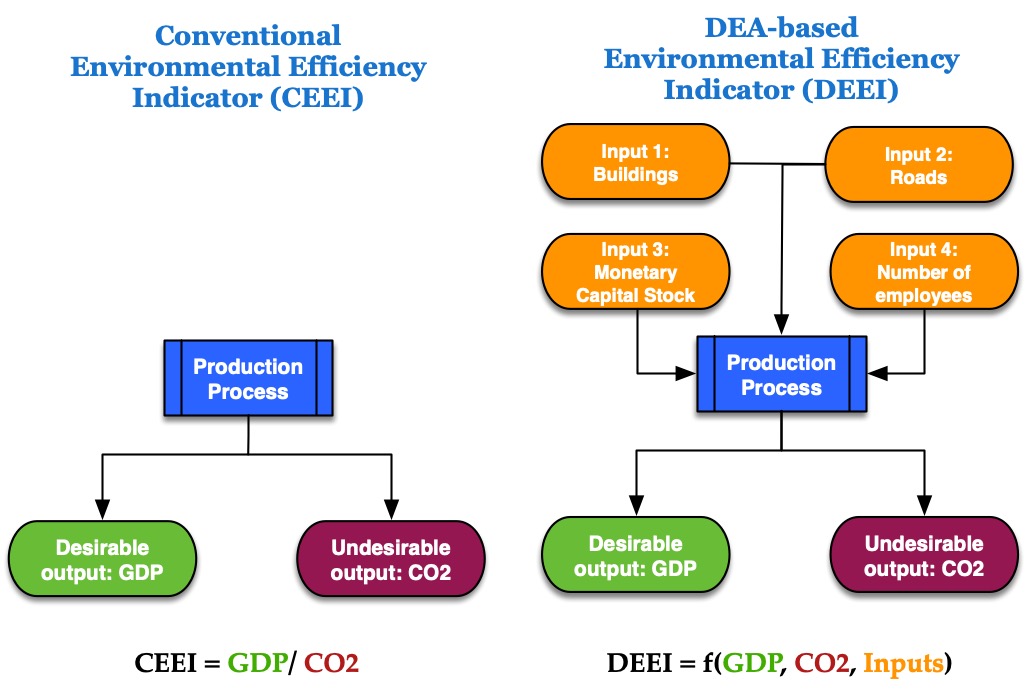 Data Sources: Eguchi (2017) and Tanikawa et al. (2015). --- class: center, middle # Lack of overall convergence across Japanese prefectures **Lack of beta convergence** **Lack of sigma convergence** --- class: middle,center ## Lack of beta convergence 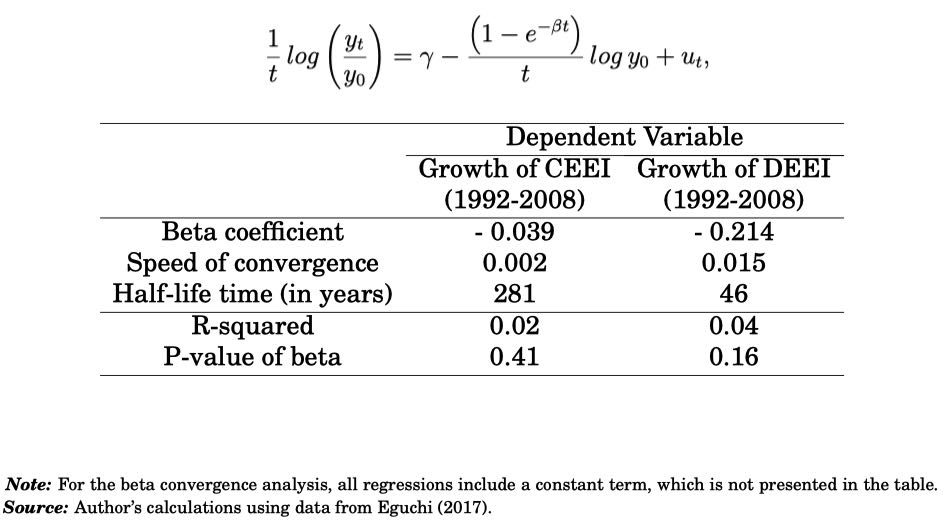 --- class: middle, center ## Lack of sigma convergence 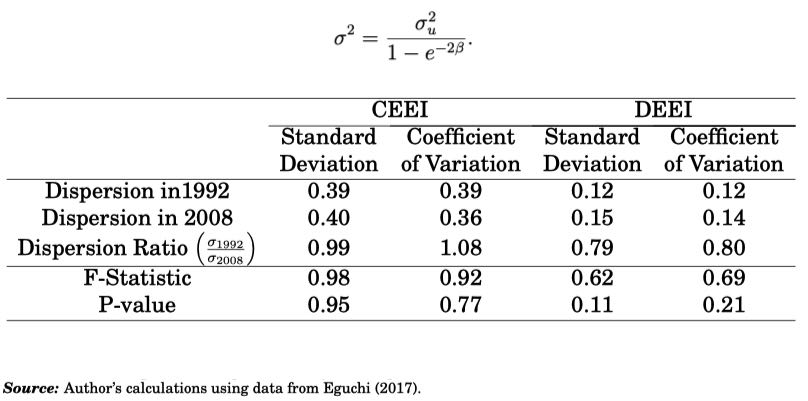 --- class: center, middle # Regional convergence clusters: Local convergence **Regional heterogeneity matters** **Tokio-led vs Median-led** **Transitioning regions?** --- class: middle # Regional heterogeneity matters - Let's GO beyond the average! - Study the dynamics of the **entire regional distribution** - Let's move from **conditional mean** to **conditional density** estimation. - Recent advances in nonparametric econometrics: **Distribution dynamics** --- class: middle, center ## The distribution dynamics framework 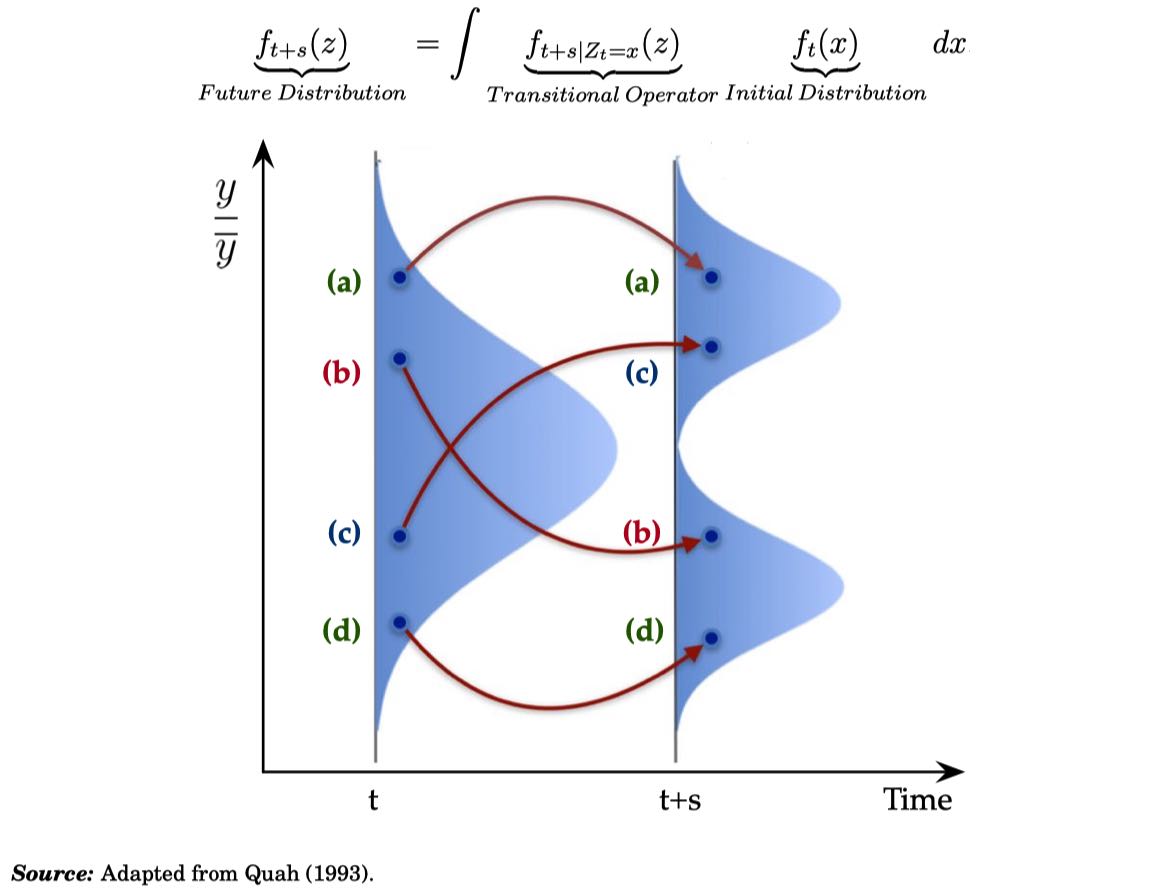 --- class: middle, center ## External-shape dynamics  --- 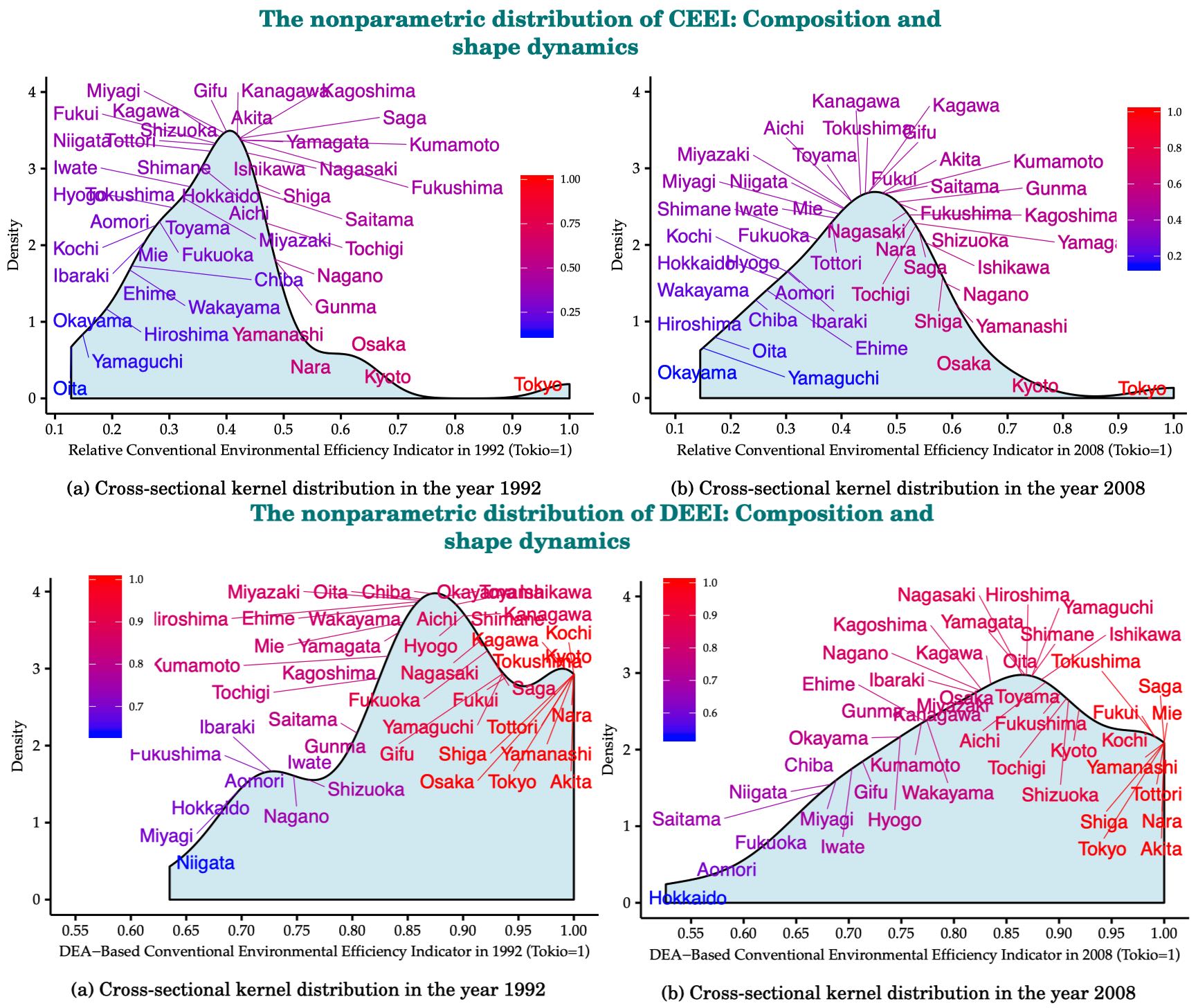 --- class: middle, center ## Intra-distribution dynamics 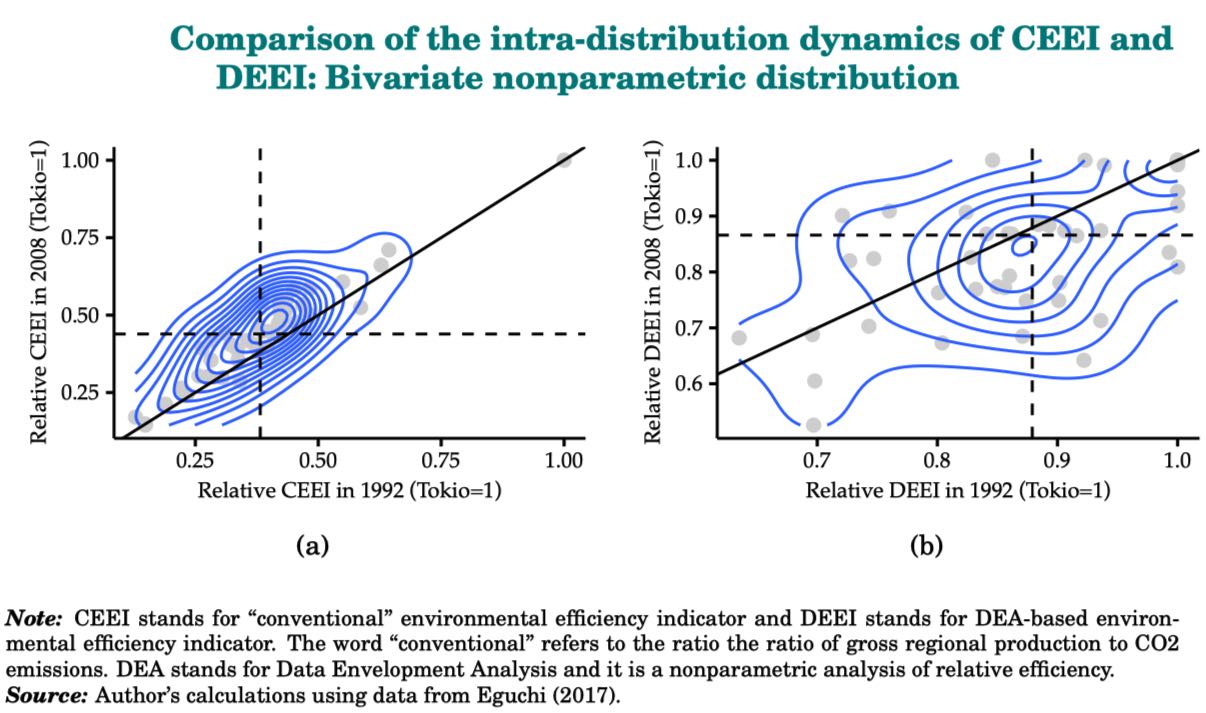 --- class: middle, center ## Regional clusters of convergence and transitioning regions 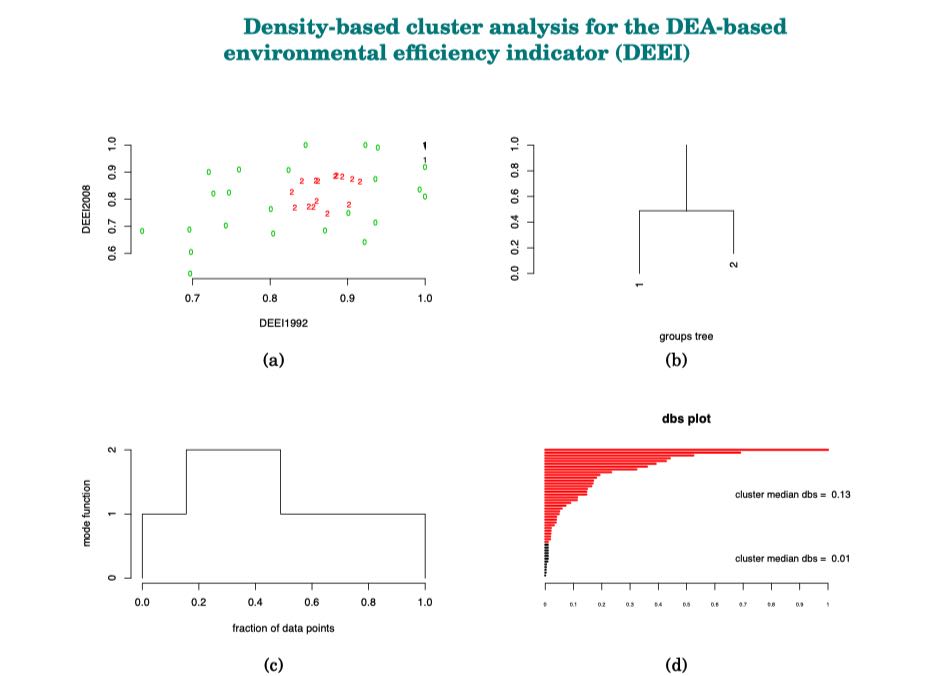 --- class: middle, center ## Conditional regional clusters 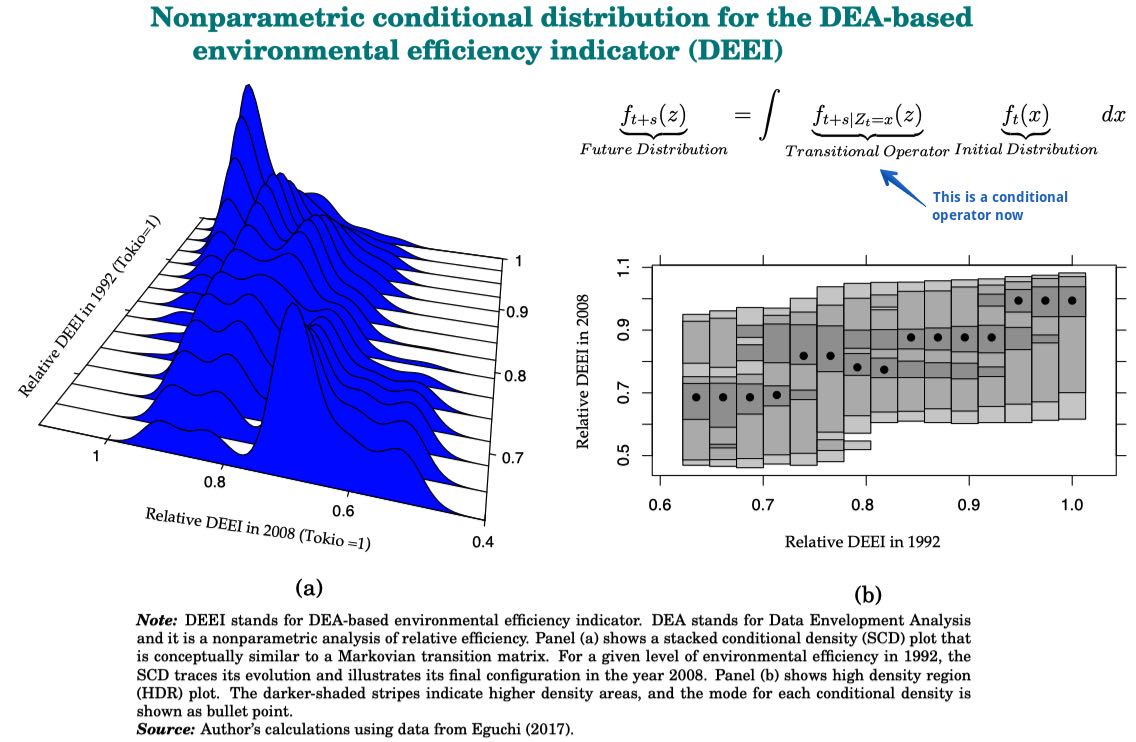 --- # Conluding Remarks - **Both** increasing the national (average) level of environmental efficiency and **reducing its cross-regional dispersion** are important means to reduce CO2 emissions ## Mesurement of environmental efficiency - DEA framework: Including inputs matters - Nonparametric density framework: Regional heterogeneity matters ## Focalization of policies - Convergence clusters help us identify regions facing similar challenges - Call for better coordination of regional policies at the cluster level ## Further research - The role of geographical neighbors in accelerating or decelerating convergence - Other determinants of the convergence clusters. Alternative convergence clustering frameworks (Phillips and Sul 2007) --- class: center, middle # Thank you very much for your attention https://carlos-mendez.rbind.io Slides available at: http://bit.ly/ices2019 Paper available at: http://bit.ly/ices2019paper